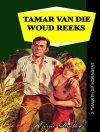Welcome to the3 Books To Knowseries, our idea is to help readers learn about fascinating topics through three essential and relevant books.
These carefully selected works can be fiction, non-fiction, historical documents or even biographies.
We will always select for you three great works to instigate your mind, this time the topic is:Voyages Extraordinaires:
Twenty Thousand Leagues under the Sea
Around the World in 80 Days
From the Earth to the Moon
All by Jules Verne
The Voyages Extraordinaires is a sequence of fifty-four novels by Jules Verne. The goal of the Voyages was to outline the geographical, geological, physical, and astronomical knowledge amassed by science and to recount, in an entertaining format. Verne’s attention to detail coupled with his sense of wonder form the backbone of the Voyages.
In Twenty Thousand Leagues under the Sea we travel in the submarine Nautilus. The crew cut off any relationship with the nations and with humanity. They live only on what the sea gives them – food, the raw material they need for the production of electricity.
Around the World in Eighty Days tells the journey of an aristocrate and his employee who, motivated by a bet, try to go around the world with limited time and resources. It was the most popular of Verne’s Voyages extraordinaires series of novels.
From the Earth to the Moon tells the story of attempts to catapult a manned projectile onto the Moon. It is curious that some of Verne’s calculations, in spite of the lack of empirical data, are quite accurate.
This is one of many books in the series 3 Books To Know. If you liked this book, look for the other titles in the series, we are sure you will like some of the topics.
Yazar hakkında
Born in Nantes, France, in 1828, Jules Verne pursued a writing career after finishing law school. He hit his stride after meeting publisher Pierre-Jules Hetzel, who nurtured many of the works that would comprise the author’s Voyages Extraordinaires. Often referred to as the ‘Father of Science Fiction, ‘ Verne wrote books about a variety of innovations and technological advancements years before they were practical realities. Although he died in 1905, his works continued to be published well after his death, and he became the second most translated author in the world.












